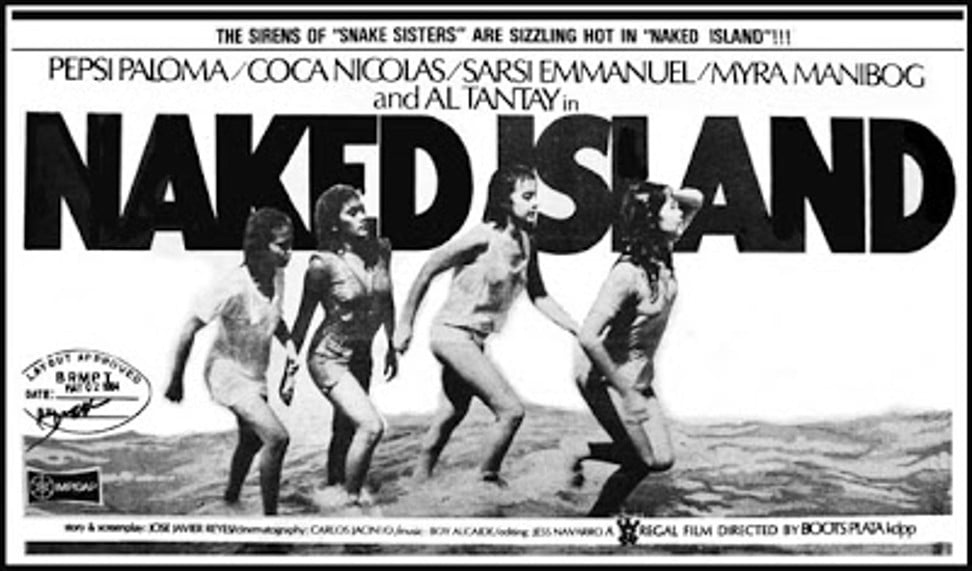
When ‘bomba’ sex films were a staple of Philippine cinemas and their female stars graced magazine covers
- Cheaply made and with female characters who were either sexual predators or rape victims, bombas thrived in pre-VCR era despite Catholic Church opposition
- In spite of their trashy quality, the bombas also often represented the hardships and misery of everyday life for Filipinos during the Marcos dictatorship
Surprisingly for a country known for its strong adherence to Catholicism, the Philippines was a major producer of sex films throughout the 1970s and 1980s.
The “bombas”, as they were known – the term best translates as “bold” and roughly means scandalous – were a mix of soft-core and hard-core pornography, and their female stars became well-known celebrities who frequently graced the covers of newspapers and magazines.
HBO Asia’s ‘nasi goreng western’ proves a hit
Although the bomba films became increasingly explicit, they were a mainstream phenomenon, and attracted students and regular audiences to cinemas, as well as men in search of a cheap thrill. Famous bomba stars included the singularly named Yvonne, and later, Anna Marie Gutierrez and Pepsi Paloma (real name Delia Smith).
Hundreds of bomba films were made over the years, with titles like Climax of Love, Unfaithful Wife, Scorpio Nights and White Slavery. Although frequently attacked by the church, the bombas and their stars became a fixture of Philippines cultural life which was only ended by the increasing availability of home VCR (video) players in the 1990s.

According to Luigi Conti’s essay Bomba: The Birth of a Genre, a number of factors were behind this explosion of screen sexuality. The sexual revolution that was taking place across the globe in the late 1960s and early 1970s played a part, as did the relaxation of censorship rules in the Philippines in 1967.
In spite of their trashy quality, the bombas also often represented the hardships and misery of everyday Filipino life during the Marcos dictatorship.
The country’s film directors had become adept at shooting fast and cheaply in the 1960s, when they made “quickie” Filipino knock-offs of Hollywood films like the James Bond movies. Meanwhile, sexual taboos had been broken by the sexy “komik” publications, which sometimes featured pornographic illustrations of film stars.

The first bomba film is thought to have been 1970’s Uhaw, a soft-core porn film about a woman who becomes promiscuous after her husband is rendered impotent by an accident at sea.
According to Conti, the films developed in waves – at first titillating, then “wet”, with a focus on wet T-shirts, and then soft-core pornography.
Full-on hard core pornographic movies played to audiences in cinemas from 1983 to 1986, but things softened down again when Cory Aquino became president in 1986.

Although bombas often played to full cinemas, they were badly made. Some movies simply cut sex scenes that had been excised under the earlier censorship rules into newer films, or dumped a sex scene in the middle of a drama.
Sometimes the sex scenes came at the end as a kind of bonus for putting up with the rest of it, although audiences would reportedly become annoyed if they had to wait too long.
If there was a storyline, it was usually abusive to women, focusing on rape and sexual harassment. The female characters were usually portrayed as victims, and if not that, as predatory nymphomaniacs or prostitutes who suffered because they destabilised male society.

It’s telling that at least two of the female bomba stars, Pepsi Paloma and Stella Strada, later committed suicide.
Some bomba films, like 1985’s Scorpio Rising, which starred Gutierrez, have achieved minor cult status.
Thai ghost story gets HBO treatment
“Featuring every kind of action in the alphabet of sex, Scorpio Rising demands the kinkiest and the shocking [sic] from its devil-may-care cast. And the movie’s brand of outrageousness spells anything from masturbation to necrophilia, or sex with the dead; all committed in the name of art,” writes Emmanuel A. Reyes in his book Notes on Philippine Cinema.

